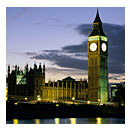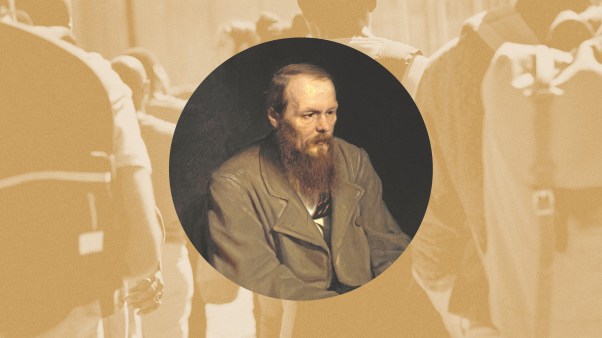Dear Brett,
What a wonderful time I had in London, thanks in good part to your excellent company. My previous visits had been with our Wheaton-in-England program (a summer study tour), so this experience of going to London for just a few days and then zipping back home is new to me. The visit was over before I had a chance to assess it. So I’m doing my assessing now—along with you, I trust.
I first saw London exactly twenty years ago, so I’m contemplating the city’s changes over two decades. What would I have thought if I had been transported directly from 1990 to 2010? There are many developments, of course, and different visitors, depending on their interests and the paths they take through the city, will register widely varying impressions. That there’s a big Ferris wheel on the Thames—it’s still there, isn’t it?—means little to me; that the British Library has its own building, rather than being jammed into the British Museum, signifies mightily. The design of the Library has generated a good deal of debate over the years, but I have always liked it; what I have never been able to get used to, though, is its placement, stacked on raucous Euston Road alongside Euston Station, St. Pancras, King’s Cross—enormous toy buildings lined up haphazardly by a bored giant. I can’t help wondering what that library would look like in the BM’s Bloomsbury neighborhood, with its patchwork of green squares.
Twenty years ago it would have been impossible to envision a second city arising in the old disused Docklands, with skyscrapers better suited for Chicago than old London. (We got a neat quick tour of the space from your friend Christopher Bond, who once worked in one of those towers and looked out his office window only to see yet another one going up.) Twenty years ago it would have been impossible to imagine the proliferation of coffee shops—and, for that matter, the wide availability in all kinds of shops of excellent tea. Not long ago, discriminating English folk might have enjoyed loose-leaf teas in their homes or in upscale tea-shops, but elsewhere coffee and tea alike came in huge stainless-steel urns. Now you can stop in the café of the Museum of London, say, and get an elegant china pot with fine loose tea spooned into a neat little cheesecloth bag. A great pleasure for a tired walker on a chilly day, one I experienced twice.
I took those restful pauses while visiting city churches, primarily—including those near but outside the old walls and therefore not in the City proper. From Bloomsbury I headed east and came to the vast Smithfield Market, just south of which is St. Bartholomew’s the Great—the oldest church in London, its round Norman arches in grey stone. A holy place, even though much of the church is long gone—only the chancel remains, which is bigger than most churches, and a Lady chapel that fell out of use some time after the Reformation and was turned to other purposes: at one point it was a printer’s shop, where Benjamin Franklin, of all people, learned the trade. It’s a chapel again now, with a colorful recent painting of the Madonna and Child behind the small altar—a bit of Modigliani-ish style against the Norman stone, which seems a bit discordant to me. But Great St. Bart’s remains, as Iain Sinclair has said, the most numinous of London’s churches.
The current rector seems to be Anglo-Catholic in sympathies: I smelled incense as I came in the door, and noted some classes to be offered in the thought of John Henry Newman. And yet I saw also an assertive notice proclaiming that, whatever other churches might do, this one offers Communion to anyone who wants it, regardless of baptism or belief—something that would have horrified Newman, who believed that, as some theologians have put it, that Communion is the sacrament of the reconciled, but Baptism must come before as the sacrament of reconciliation itself. Aesthetic Anglo-Catholicism needs to be distinguished from doctrinal Anglo-Catholicism, I think.
A little later, walking east along London Wall, I noted the odd solitary tower of St. Alban’s—a Christopher Wren church otherwise destroyed, sitting incongruously in the middle of a street—and then the blank brick flank of All Hallows-on-the-Wall. Turning down Bishopsgate I passed, almost without seeing it, the shy façade of St. Ethelburga’s, flush with the surrounding office buildings: it’s not a parish church anymore, after a 1993 IRA bomb nearly destroyed it, but houses the St Ethelburga’s Centre for Reconciliation and Peace. Then I crossed a building site, rounded a corner, and came up on St. Helen’s—which is unseeable to any such walker for a moment, thanks to the great looming bulk of the Gherkin just behind it.
But when you go in, you discern a beautiful space, not quite as old as Great St. Bart’s but 13th century, and yet utterly different in aspect and atmosphere. To some extent this results from the large clear windows, some of which were installed after the IRA bomb that devastated St. Ethelburga’s and much of Bishopsgate shattered the ancient stained glass. The restoration that followed seemed bent on transforming this Gothic structure into a Wren-style auditory church. The space is open and strongly lit—it seems a place for listening to sermons and taking notes in your Bible, which is quite fitting when you consider the strongly evangelical character of the congregation today.
There’s no parish in London more dynamic than St. Helen’s: any time you walk in—as you know from experience, Brett—the devotion and zeal are palpable. In St. Helen’s I automatically smile. Visit on a weekday morning and you’re likely to find people wheeling in bag lunches and placing Bibles in the stackable chairs in preparation for lunchtime Bible studies (heavily attended by workers in this financial district). It’s great.
And yet there’s something just a little odd about it: the drum kit and amplifiers next to the 17th-century pulpit, the folding tables and styrofoam cups set up around the great marble monuments to the distinguished dead of the City … the space seems just a space, somewhere to meet and praise. If the very stones of Great St. Bart’s feel numinous, those of St. Helen’s feel just functional, as though an old hall or gymnasium would serve the purpose just as well. Which of course they would: the people of God can find his presence anywhere, and the vibrancy of worship at St. Helen’s is immensely attractive. But I’m still trying to account for my feelings of dissonance.
In any event, when I think about our recent trip, this polarity—Great St. Bart’s at one end of the City and of my walk, St. Helen’s at the other—comes first to my mind. What about you?
Cheers, Alan
London Letters, 2 London Letters, 3 London Letters, 4 London Letters, 5 London Letters, 6
Copyright © 2010 Books & Culture. Click for reprint information.









